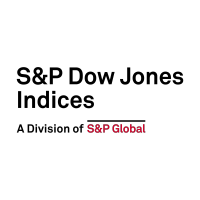Tag Archives: copper
Gold Hits All-Time Highs and DJCI Silver Tops 10% in November
“Silver and gold, silver and gold, Everyone wishes for silver and gold.” -Burl Ives My all-time favorite stop-motion animation show was the 1964 TV special Rudolph the Red-Nosed Reindeer, narrated by Burl Ives. Playing the role of Sam the Snowman, Ives sang “Silver and Gold,” paying tribute to the work of Yukon Cornelius, a prospector…
- Categories Commodities
- Other Tags
- Categories
- Commodities
- Other Tags
Material Change in a Material World
As our climate changes, so do our ways of producing and consuming energy. A global effort is underway to replace fossil fuels with renewables in our energy matrix.1 This planned energy transition’s speed, scope and scale of impact on the global economy is unparalleled in our history.2 North America’s unique position of contributing nearly 18%…
- Categories Sustainability, Thematics
- Other Tags
Sustainability within the Modern Commodity Allocation – The S&P GSCI Light Energy Climate Aware Is Launched
After extensive market outreach, S&P Dow Jones Indices launched the S&P GSCI Light Energy Climate Aware to satisfy a need for a benchmark tied to sustainability and the energy transition, but with a lighter energy weighting than the new S&P GSCI Climate Aware. As can be seen in Exhibit 1, the S&P GSCI Light Energy…
- Categories Commodities, Sustainability
- Other Tags
The S&P GSCI Cooled in April as Inflation Cooled
The S&P GSCI fell 0.8% in April as the Fed’s preferred measure of inflation, Personal Consumption Expenditures (PCE), fell slightly on a year-over-year basis to 4.6%. Continued elevated readings of inflation, albeit cooling, led to market expectations that the Fed would hike rates again in May to bring inflation back to its 2% target. Commodities…
- Categories Commodities
- Other Tags
- Categories
- Commodities
- Other Tags
Will the S&P GSCI Electric Vehicle Metals Outperform with Copper Leading the Way?
Recent bullish fundamentals appear to be falling in line for the electric vehicle metals space. A decade of weak metals prices has led to underinvestment by miners and refiners, as private investment and bank financing support waned. In 2022, S&P Global released a comprehensive report on copper outlining the current trending Rocky Road supply scenario…
- Categories Commodities
- Other Tags
Commodities Rise 36% in 2022 after a Flat July
The S&P GSCI remained flat in July, holding on to a 36% YTD gain despite the bearish sentiment permeating the broad financial markets. This benchmark for world commodities has proven its merit during extremely hot inflation. The Fed hiked interest rates another 75 bps to fight inflation late in the month, but several factors across…
- Categories Commodities
- Other Tags
- Categories
- Commodities
- Other Tags
Commodities Hit the Brakes in June
The prospect of higher interest rates, fears of a prolonged global economic slowdown and a strong U.S. dollar put the brakes on commodities prices in June. The S&P GSCI, the broad commodities benchmark, ended the month down 7.6%, taking YTD performance to 35.8%, still the best first half performance since 2008. The deteriorating economic outlook…
- Categories Commodities
- Other Tags
Reductions in Risk Caused Disparate Returns for Commodities in April
Another higher inflation reading helped the S&P GSCI, the broad commodities benchmark, to post an additional 5.1% gain in April. Many market participants realized the U.S. Fed may be behind the curve and have started allocating capital to commodities in 2022. Agriculture and energy continued to outperform last month, while metals and livestock underperformed. Among…
- Categories Commodities
- Other Tags
- Categories
- Commodities
- Other Tags
Commodities Burst Higher in April
Several commodities made new all-time highs, as the global economy reflated, consumer confidence hit pre-pandemic highs, and housing prices in the U.S. jumped the most in 15 years. The S&P GSCI continued to perform well, rising 8.2% for the month to start the second quarter, following a strong 13.5% in the first quarter. Most commodities…
- Categories Commodities
- Other Tags
Capturing the Past, Present, and Future of Commodities with the S&P GSCI
After three decades of helping investors make more informed decisions and providing index-based access to diversification, liquidity, and inflation protection – what’s next for this index icon?
- Categories Commodities
- Other Tags













































